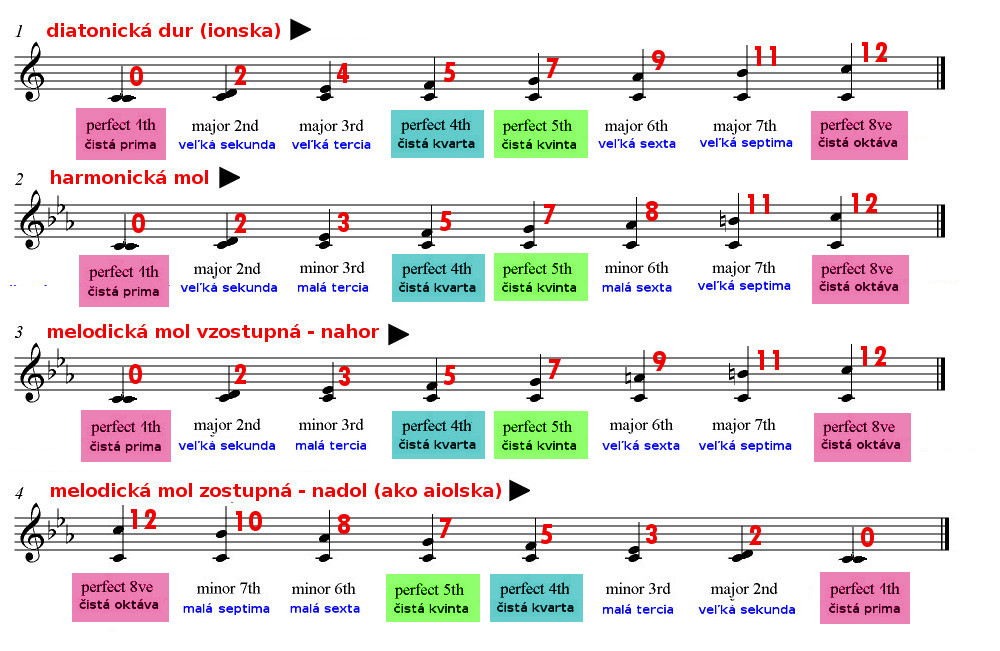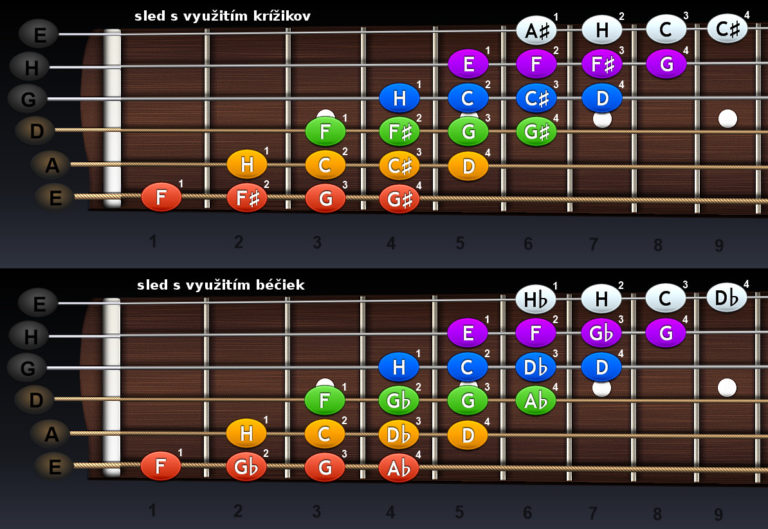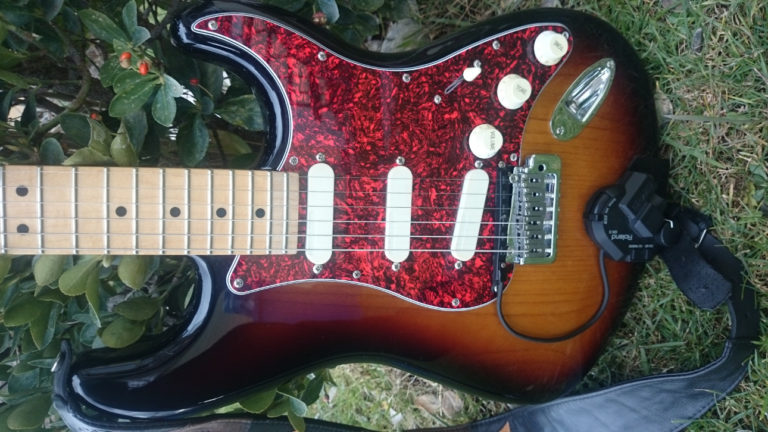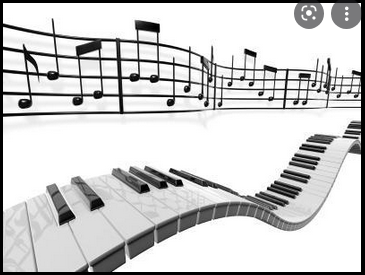Intervaly do hĺbky – príklady – odvodenia
Intervaly do hĺbky – príklady – odvodenia
Intervals in depth - examples - derivations
Interval je výšková vzdialenosť dvoch tónov. Z fyzikálneho (akustického) hľadiska je to vzájomný pomer počtu ich kmitov. Je daný pomerom ich kmitočtov, nie ich rozdielom! Rozlišujeme intervaly melodické (tóny idú po sebe) vrchné alebo spodné a alebo harmonické (tóny zaznejú naraz).
An interval is the pitch distance between two notes. From a physical (acoustic) point of view, it is the mutual ratio of the number of their oscillations. It is given by the ratio of their frequencies, not their difference! We distinguish intervals between melodic (tones follow each other), upper or lower, and harmonic (tones sound at once).
príklady / examples:

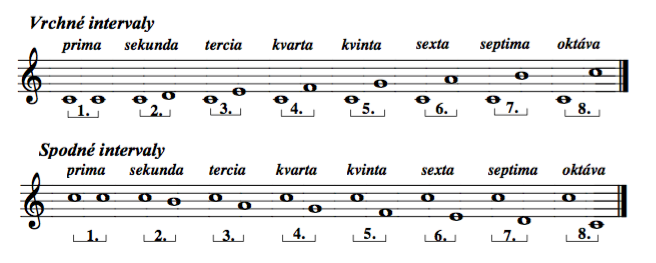

Harmonický interval môže náš sluch dráždiť alebo môže pôsobiť upokojujúco. Na základe toho rozlišujeme intervaly: konsonantné (ľubozvučné), disonantné (neľubozvučné).
A harmonic interval can irritate our hearing or it can have a calming effect. Based on this, we distinguish intervals: consonant (pleasant), dissonant (unpleasant).

Podľa príslušnosti ku škále určitej stupnice: doškálne alebo nedšokálne.
According to belonging to the scale of a certain scale: pre-school or non-school.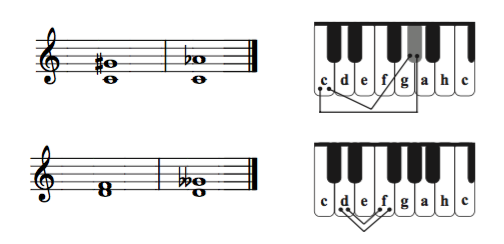
Podľa toho či presahujú alebo nepresahujú oktávu sú základné (prima až oktáva) alebo rozšírené.
Depending on whether they exceed or do not exceed an octave, they are basic (prima to octave) or extended.
Podľa reálnej vzdialenosti dvoch tónov sluchom (jej veľkosť vyjadrujeme počtom poltónov), preto ich voláme reálne intervaly.
According to the real distance between two tones by ear (its size is expressed by the number of semitones), that's why we call them real intervals.
Podľa notopisnej vzdialenosti medzi dvojicou tónov. Takto vyjadrené intervaly nazývame nominálne intervaly (intervaly podľa mena v notopise).Nominálne intervaly označujeme arabskými číslicami a menujeme latinskými radovými číslovkami podľa vzdialenosti od prvého tónu stupnice k jednotlivým stupňom.
According to the notational distance between a pair of tones. Intervals expressed in this way are called nominal intervals (intervals according to the name in the notation). Nominal intervals are denoted by Arabic numerals and named by Latin ordinal numbers according to the distance from the first tone of the scale to the individual degrees.
Popis virtuálneho gitarového hmatníka (superhmatník)
description of virtual guitar fingerboard (super-fingerboard)
označenie intervalov / marking intervals
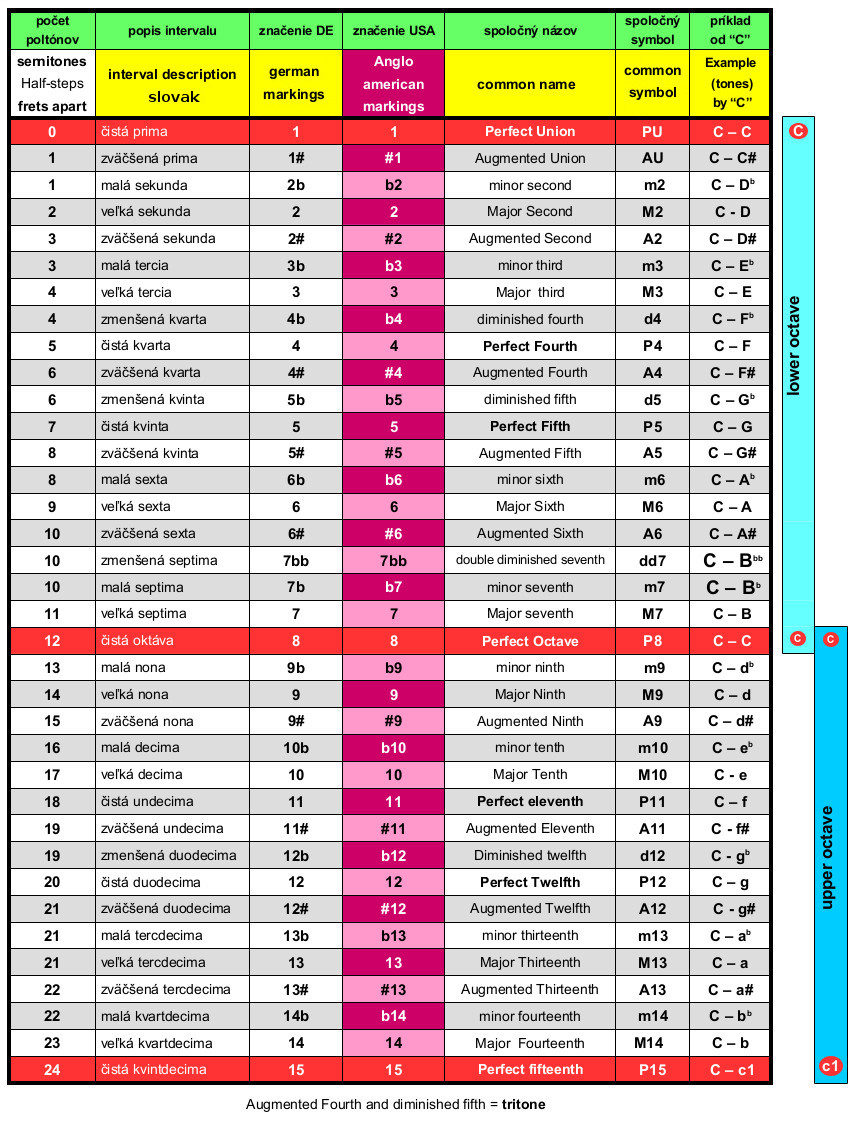
Poznámka: stĺplec 6 = skratka anglo-amerického názvu intervalu, pričom čisté a veľké intervaly majú veľké písmená a malé a zmenšené majú malé písmená.
Note: Column 6 = Abbreviation of Anglo-American interval name, with pure and major intervals capitalized and minor and reduced in lowercase.
Príklady melodických vrchných intervalov – noty
TABy - Examples of melodic intervals - notes - TABs
Pre tých menej skúsených je tu vysvetlenie (popis príkladu v takte 22 nižšie na obrázku) ako čítať rozumieť, čo je na obrázku zobrazené:

1/ V notovej osnove sú zobrazené tóny „c1“ a „es1“.
2/ Jedná sa o melodický interval vrchný – malá tercia 3b (druhý tón „es1“ je vyšší ako prvý tón „c1“). Smerovanie ukazuje šípka.
3/ Tabulatúra pod notovou osnovou ukazuje, že tóny sú hrané na strunách „A – d“. (Tón „c1“ sa hrá v 3 polohe na strune „A“, tón „es1“ sa hrá v 1 polohe na strune „d“.)
4/ Veľké červené číslo 3 nad šípkou hovorí, že medzi tónmi je rozpätie 3 poltónov. V takte 21 je ten istý interval malej tercie ale hraný len na strune „A“ v 3 a 6 polohe. Podľa popisu tohto príkladu si môžete pozrieť a naštudovať všetky uvedené príklady na veľkom obrázku notovej osnovy a tabulatúry nižšie.
For the less experienced, here is an explanation (description of an example in bar 22(description of the example in bar 22 below the image) on how to read and understand what is shown in the picture:1/ The notes "c1" and "es1" are shown in the sheet music. 2/ This is a melodic interval upper - minor third 3b (the second note "es1" is higher than the first note "c1"). The arrow shows the direction. 3/ The tablature below the staff shows that the notes are played on the "A - d" strings. (The tone "c1" is played in 3 position on the "A" string, the tone "es1" is played in 1 position on the "d" string.) 4/ The big red number 3 above the arrow says that there is a span of 3 semitones between the notes. In measure 21, the same interval of a minor third is played only on the "A" string in the 3rd and 6th positions. According to the description of this example, you can view and study all the examples given in the large sheet music and tablature image below.

Základné intervaly na hmytníku gitary – príklady na strunách „A“ a „B“ v dvoch oktávach – usa značenia
Basic intervals on the fretboard of the guitar examples on the "A" and "B" strings in two octaves - usa markings
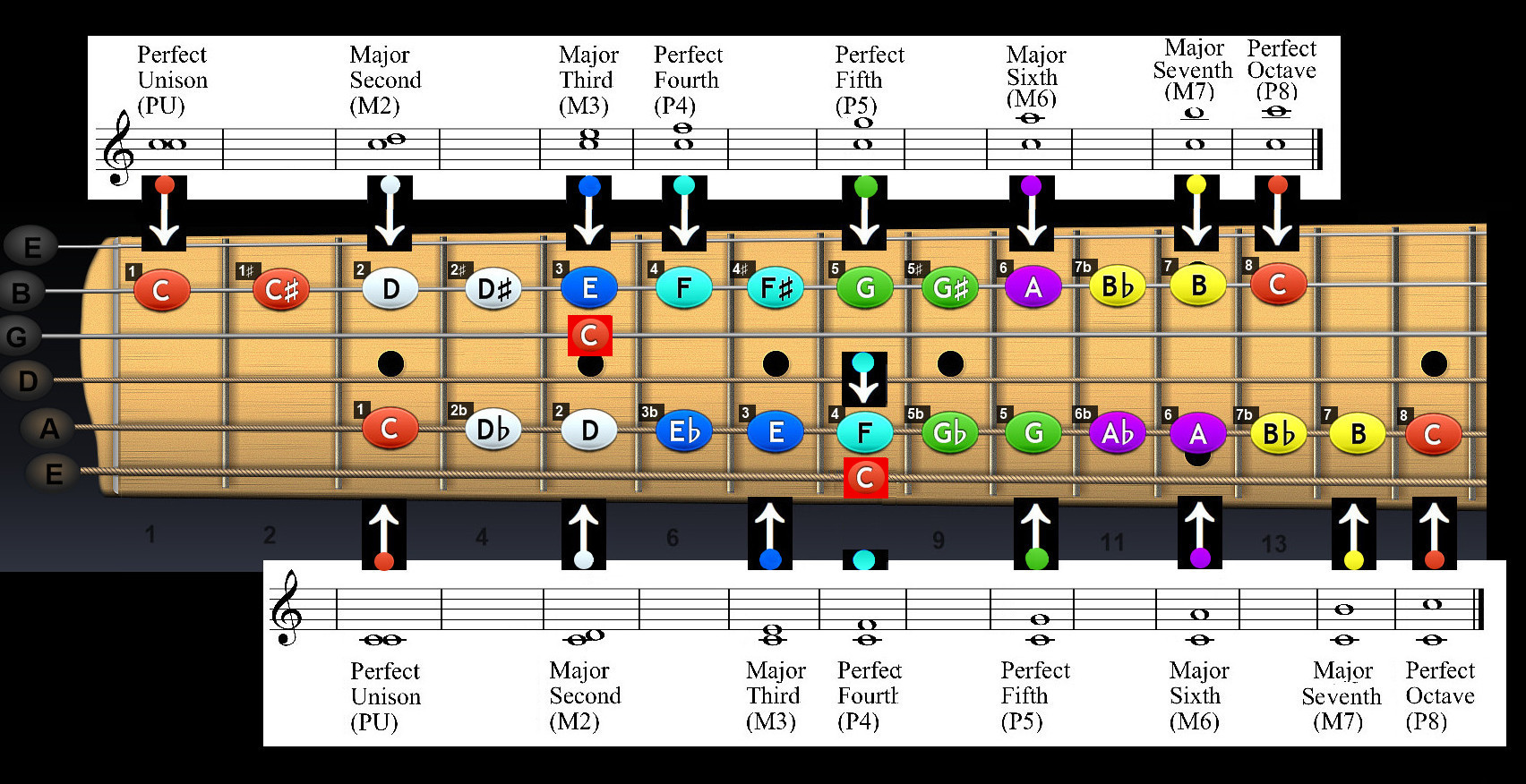
Príklady harmonických intervalov – noty / Examples of harmonic intervals – notes
Niekoľko príkladov harmonických intervalov môžete vidieť na obrázku nižšie. Štyri príklady na samostatných notových linkách (1 – 2 – 3 – 4) popisujú vnútornú intervalovú štruktúru niektorých stupníc. 1 riadok = diatonická dur (ionska), 2 riadok = harmonická mol, 3 riadok = melodická mol vzpstupná, 4 riadok = melodická mol nadol = rovnaké tóny ako diatonická mol (aiolska). Poznámka: Veľké červené číslo pri notách označuje počet poltónov v zobrazenom harmonickom intervale.
You can see some examples of harmonic intervals in the picture below. Four examples on separate note lines (1 - 2 - 3 - 4) describe the internal interval structure of some scales. 1 row = diatonic major (Ionian), 2 row = harmonic minor, 3 row = melodic minor ascending, 4 row = melodic minor down = same notes as diatonic minor (aiolian). Note: The large red number next to the notes indicates the number of semitones in the displayed harmonic interval.
